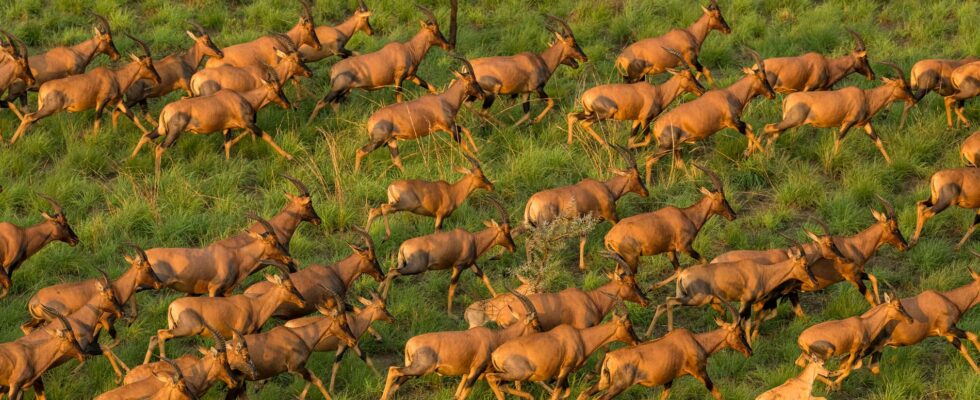unsaveSave
expand-left
full screen
chevron-rightnext
Huge herds of antelope have recently been discovered in South Sudan in northeast Africa. The picture shows lyre antelopes.
1 / 2Photo: Marcus Westberg/African Parks/TT
Inventories of the savannas of eastern South Sudan have revealed the presence of the largest concentration of large mammals in the world. In total, the researchers have counted six million antelopes belonging to four different species.
In other words, the time of surprising discoveries is not over. That such an enormous amount of large animals has been able to remain unknown is highly remarkable, but reflects the fact that South Sudan still contains vast wilderness areas that have not yet been heavily impacted by humans.
The area inventoried is large, almost 123,000 square kilometers, and spreads out between the Nile and the Ethiopian highlands. The antelopes migrate every year back and forth between places where they spend the dry season and places where they stay during the rains.
The most common species is the white-eared cob whose population has been estimated at 5.1 million (!) individuals. This is followed by mongallaga gazelle (350,000), lyre antelope (300,000), and pronghorn (160,000).
“Amazing”
The researchers, who counted the animals from the air during April and May with the help of special cameras, are themselves amazed. It had been feared that many of the animals would have succumbed to poachers.
– The result of the inventory is nothing short of astonishing, says Peter Fearnhead, director of African Parks, an international nature conservation organization that works to preserve national parks and other areas in Africa.
David Simpson, another of the organization’s employees, adds:
– We first flew for 30 to 40 minutes and saw nothing. I thought: “Maybe it’s over. Maybe the wild animals have already disappeared”. But then an antelope appeared, two, three four. Then hundreds appeared, and then thousands, then tens of thousands and hundreds of thousands.
Lions and leopards
The number of wandering antelope, six million, is by far the largest concentration on earth. In the Serengeti and Masai Mara in Tanzania and Kenya there are around 2.5 million large mammals, which many have believed to be an absolute record, but now South Sudan is number one on the list.
Although the poachers have caused great damage to species other than the wandering animals. Stationary species such as buffalo and horse antelope have declined dramatically. Even zebras have become rare.
On the other hand, the large predators seem to have done well. Lions are reported to be common, as are hyenas and leopards.
The big challenge will be to preserve as much as possible of the fantastic fauna, while meeting the needs of the population.
FACT South Sudan
South Sudan is the world’s youngest nation. The country became independent in 2011 when what used to be Sudan was split into two parts after many decades of war between the two parts.
The country is characterized by the Nile whose surrounding wetlands cover huge areas.
The population, about eleven million people, consists mostly of Nilotic ethnic groups. The largest is called dinka.
Source: NE
Read more
